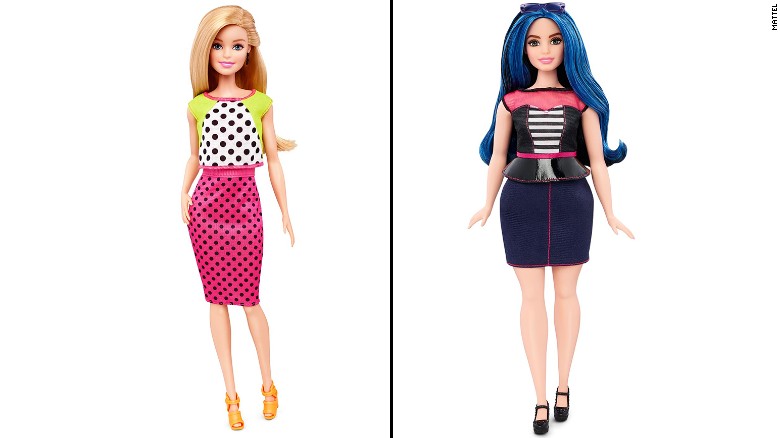Barbie now comes in different shapes and sizes
According to Mattel, Barbie will now come in four body types and seven different skin tones, with 22 eye colors and 24 hairstyles. Currently available only through Mattel’s online store, the new line will be in stores on March 1.
January 29, 2016
In today’s society, it seems to be the trend for girls to achieve a slender figure through the means of relentless dieting and exercise. This widespread misconception on body image is further perpetuated by the influence of unrealistic depictions often seen in the media. It’s possible that this unhealthy perception may even apply to young girls, who are ever so influenced by the everyday things they see and interact with – one of the culprits being the Barbie dolls that they play with.
However, a recent breakthrough for the famous Barbie occurred when Mattel announced that a new line of Barbie dolls, with variations in body type, skin tone, eye color, and hairstyle, would be entering the market. After a 4% decline in sales in 2015, and the company stock price dropping by 43%, Mattel hopes that this new line of dolls will help bring the company back up. And this is a major step for the doll, infamously known for receiving many controversies due to her unrealistic depiction of body size.
A 2006 British study found that “girls exposed to Barbie reported lower body esteem and greater desire for a thinner body shape” than those who had been given dolls reflecting larger body types or no dolls at all.
Since her debut in 1959, Barbie has gone through many transitions to accommodate for changing trends in society and the rise of diversification, major ones being changes in skin color, eye color, and hair style. However, never before has Barbie come in curvy, tall, or petite sizes. The revelation that Barbie will now come in different body types will show young girls a more realistic and positive look on body image, a pressing issue that impacts young individuals in this current era, where pressure to look a certain way is ever so recurrent.
According to the American Academy of Pediatrics, hospitalizations due to eating disorders jumped by 119 percent from 1999 to 2006 for children aged 12 and under. Moreover, researchers have attributed one of the factors of these rising trends to the unrealistic portrayal of body image seen in many products targeted towards children, namely dolls. This makes the recent news about Barbie so celebratory and good to hear; the iconic doll will now portray a more realistic depiction of body image to young girls.
However, while this is an enormous breakthrough for Barbie, other companies are beginning to show further diversification. The famous company Lego, for instance, announced that it will release a figure that comes in a wheelchair for the first time ever. The figure came to be when the organization, “Toy Like Me,” started an online petition on change.org calling on LEGO to “positively represent disability” and to “help generations of kids, both with and without disabilities, grow up with a more positive attitude to human difference!”
“We are beyond happy right now,” campaigner Rebecca Atkinson of “Toy Like Me” said in a statement posted online. “Lego have just rocked our brick built world and made 150 million disabled kids, their mums, dads, pet dogs and hamsters very very happy.”
Through efforts to diversify popular toys that children are familiar with, a positive influence is being created from a young age, and children will learn the importance of embracing differences. Hopefully, as society continues to progress and become even more accepting of representations from all backgrounds, these positive changes will be reflected in other children’s toys and even more.






